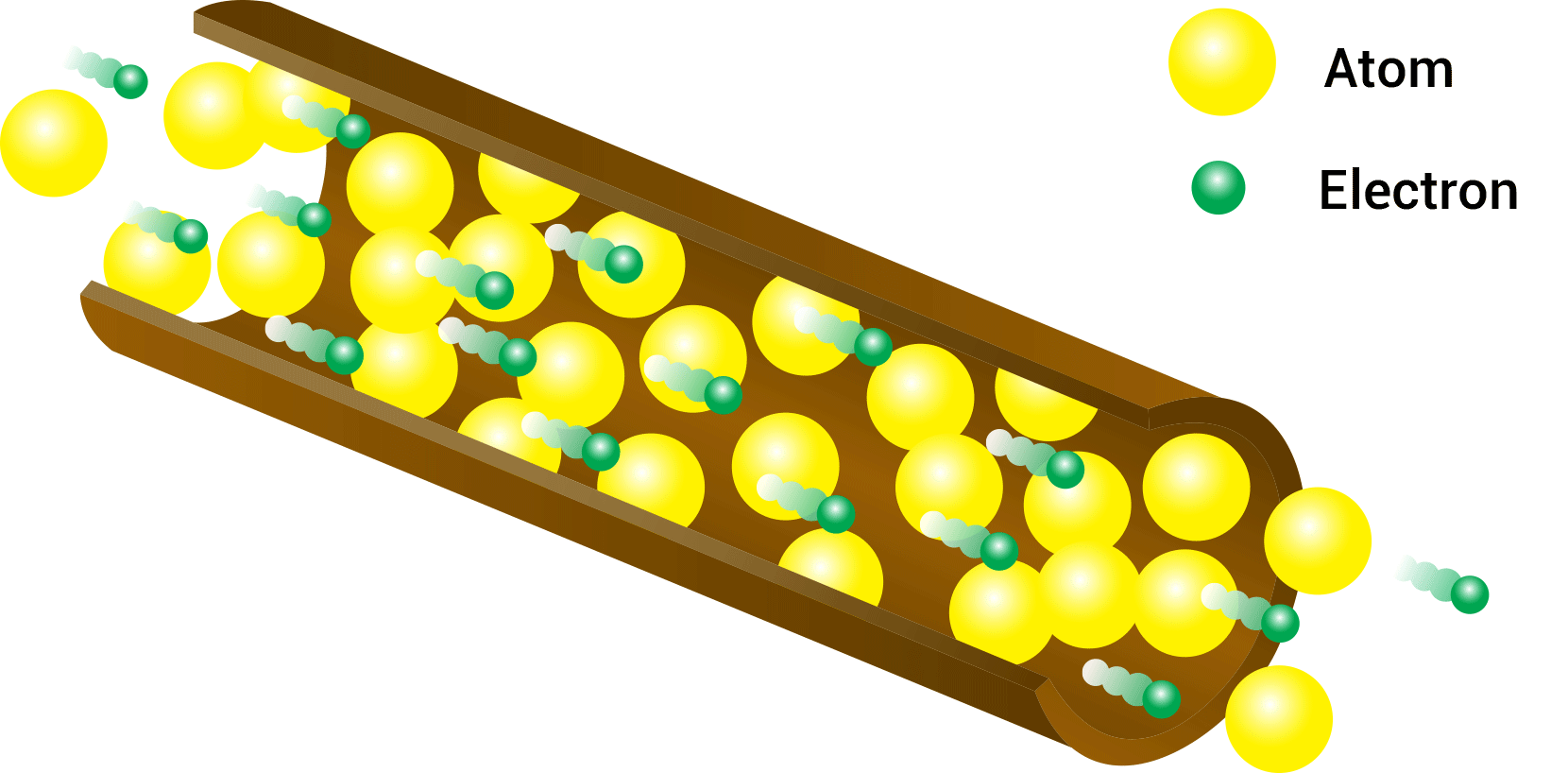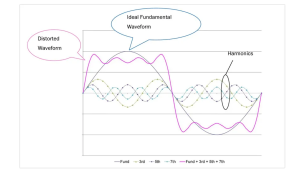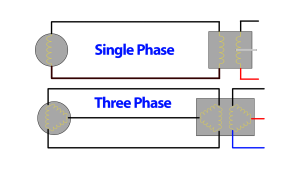Electric Current: The Flow of Electric Charge
Electric current is a fundamental concept in the study of electricity, akin to the flow of water through pipes. It is the movement of electric charge through a conductor and is essential for powering everything from small electronic devices to large industrial machinery. During this article, we will delve into what electric current is, how it works, its relationship with voltage and resistance, and use analogies to make these concepts clearer.
What is Electric Current?
Electric current (I) is the flow of electric charge through a conductor, such as a wire. This flow is measured in amperes (A). Which represent the quantity of charge passing through a point in the circuit per unit time. One ampere is equivalent to one coulomb of charge passing through a point in one second.
To visualize this, imagine a river flowing. The water molecules represent the electric charge, and the rate at which the water flows represents the current. Just as a river’s flow can vary from a gentle stream to a raging torrent, electric current can range from tiny currents in microelectronics to massive currents in power transmission lines.
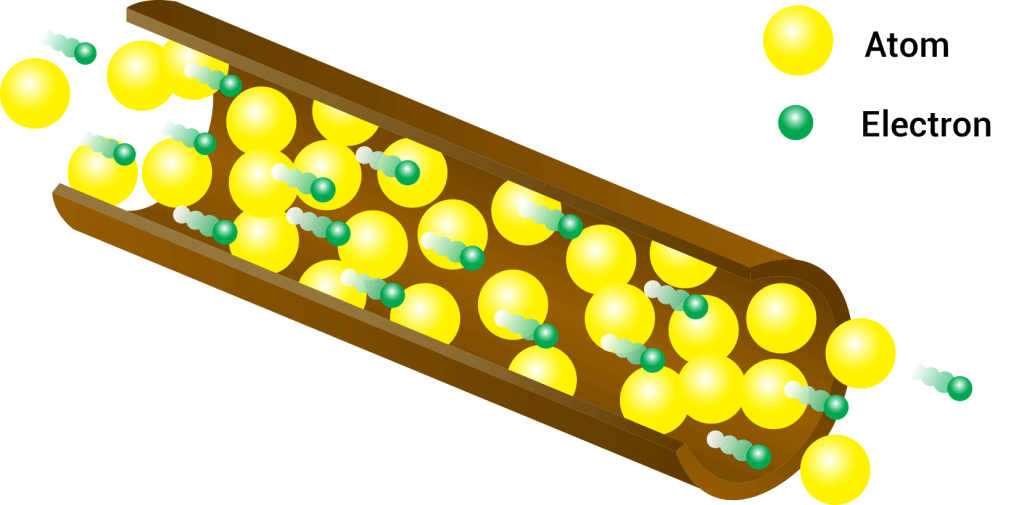
How Electric Current Works
Electric current is driven by a potential difference (voltage) across a conductor. When a voltage is applied, it creates an electric field that exerts a force on the charged particles within the conductor, causing them to move. Therefore this movement of charges constitutes an electric current.
In a simple circuit with a battery and a resistor, the battery provides the voltage, and the resistor controls the amount of current flowing through the circuit. The direction of the current is conventionally considered from the positive terminal to the negative terminal of the battery. Although the actual movement of electrons is in the opposite direction.
Types of Current: AC and DC
Electric current can flow in two ways: Alternating Current (AC) and Direct Current (DC). AC is the type of current where the flow of electric charge periodically reverses direction. It is the standard form of electricity supplied to homes and businesses and is used for powering most appliances. In contrast, DC is the type of current where the flow of electric charge is in a single, consistent direction. DC is commonly used in battery-powered devices, electronics, and for some specific industrial applications.
Direct Current (DC)
Direct Current, abbreviated as DC, is a type of electrical current where the flow of electric charge is unidirectional. This means it flows consistently in one direction. This type of current is produced by sources such as batteries, solar cells, and DC generators.
Characteristics of DC:
- Constant Flow: The electric charge flows steadily from the negative terminal to the positive terminal.
- Voltage Polarity: The voltage polarity remains constant over time, making it easy to store in batteries.
- Applications: DC is commonly used in low-voltage applications like electronic devices, automotive systems, and any device that requires a stable and constant voltage supply.
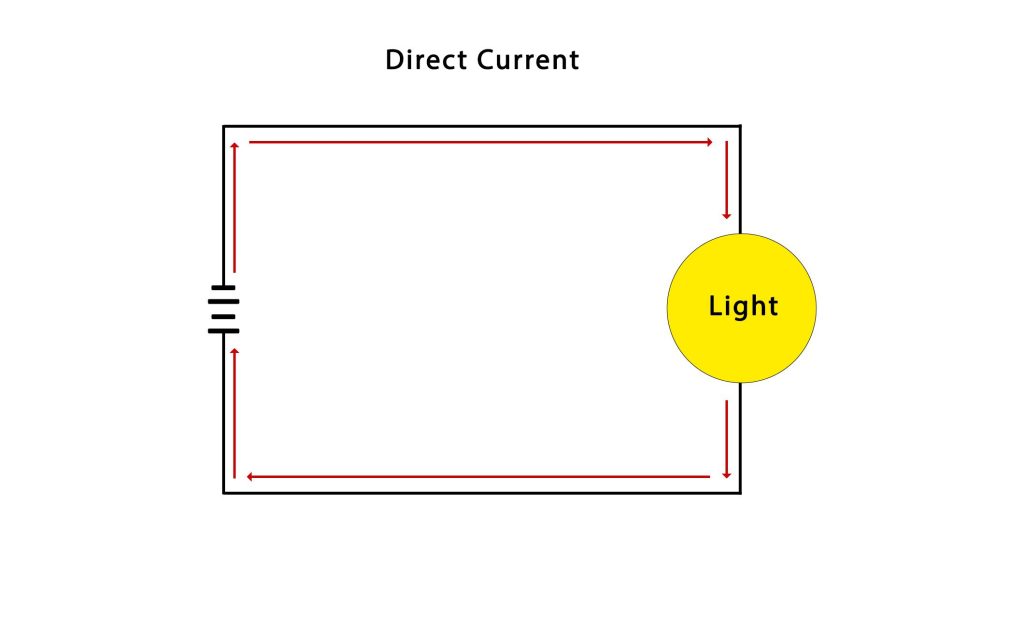
How DC Works:
In a DC circuit, electrons move from the negative terminal of the power source, through the circuit, and return to the positive terminal. Because of the constant voltage, DC systems are straightforward and often used in applications where a stable and continuous current is needed.
It is important to mention that not all DC is constant, though all DC is unidirectional. With power sources that have a constant EMF, such as batteries or solar panels, the DC current is constant. However, with power sources that rotate, such as generators, DC power is periodic and therefore pulsing rather than constant. We will cover pulsing DC in a later article, however just keep in mind that what makes direct current distinct, is the direction.
Alternating Current (AC)
Alternating Current, abbreviated as AC, is a type of electrical current where the flow of electric charge periodically reverses direction. This type of current is generated by AC generators and is the standard form of electricity supplied to homes and businesses.
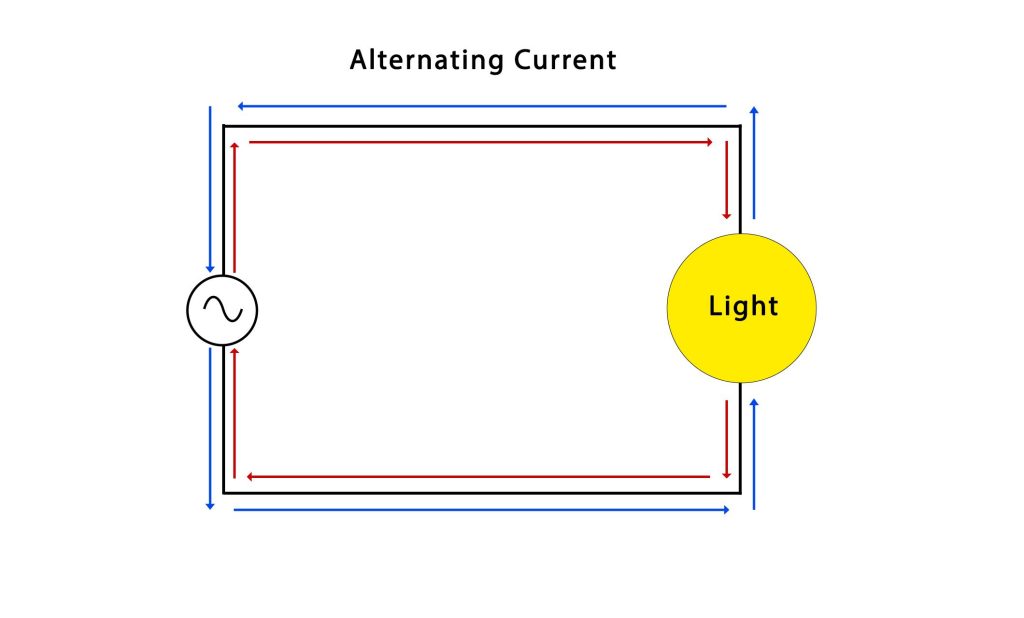
Characteristics of AC:
- Periodic Flow: The direction of the current flow changes periodically, typically following a sinusoidal waveform.
- Voltage Polarity: The voltage alternates between positive and negative, creating an oscillating current.
- Applications: AC is widely used for power distribution because it can be easily transformed to different voltages, making it efficient for long-distance transmission. It powers household appliances, industrial machinery, and lighting systems.
How AC Works:
In an AC circuit, the electrons move back and forth, changing direction periodically. This alternating motion is driven by the changing polarity of the voltage source. The most common waveform of AC is the sine wave, characterized by its smooth periodic oscillation, however due to most modern electronics it is more common to see other waveforms in circuits as distortion occurs in many loads.
Relationship with Voltage and Resistance
The relationship between current, voltage, and resistance is described by Ohm’s Law, which states:
Where I is the current in amperes, E is the voltage in volts, and R is the resistance in ohms. For instance, if we were to measure the current of a 120V circuit with a 10Ω resistor we would expect 12A of current to be flowing through the circuit. This measurement can be taken with a multimeter, but beyond that we can calculate this to prove it works mathematically:
This equation shows that the current is directly proportional to the voltage and inversely proportional to the resistance. If you increase the voltage while keeping the resistance constant, the current increases. Conversely, if you increase the resistance while keeping the voltage constant, the current decreases.
Power and Electric Current
Power (P) in an electrical circuit is the rate at which electrical energy is converted to another form of energy, such as heat or light. It is given by the formula:
Where P is the power in watts, E is the voltage in volts, and I is the current in amperes. To calculate the power consumed by a light bulb connected to a 120V light socket, we can measure the current and find it’s drawing 0.5A. Thus, we can calculate the bulb’s wattage with:
Beyond this we can use the same calculation to figure out how much capacity a circuit has for electrical devices to be installed. So, say we have a 120V circuit coming from a 20A breaker. This means the circuit’s capacity is:
This mathematical relationship also means that for a given voltage, increasing the current increases the power consumed by the circuit. Similarly, for a given current, increasing the voltage increases the power.
Water Flow Analogy
To better understand electric current visually, let’s use the analogy of water flowing through pipes. Imagine a system of pipes connected to a water pump. The water pump creates a pressure difference, analogous to voltage, that drives the water through the pipes. The flow rate of the water, analogous to electric current, depends on the pressure difference (voltage) and the resistance to flow in the pipes (resistance).
If the pump increases the pressure, more water flows through the pipes per second, just as increasing the voltage in an electrical circuit increases the current in the wires. If the pipes are narrow or have obstacles, the resistance increases, reducing the flow rate, just as higher resistance in an electrical circuit reduces the current.
What Does 1 Ampere Mean?
One ampere of current means that one coulomb of charge is passing through a point in the circuit per second. In practical terms, this can be visualized as a large number of electrons moving through the conductor. One coulomb of charge is approximately equal to 6.242×1018 electrons (6.2 quintillion, or 6,200,000,000,000,000,000). Therefore, a current of 1 ampere involves an immense number of electrons moving through the conductor every second, even though 1 ampere is not often considered “a lot” of current.
Conclusion
Electric current is the flow of electric charge driven by a potential difference (voltage) through a conductor. By thinking of it as the flow of water through pipes, we can better understand its behavior and relationship with voltage and resistance. Ohm’s Law and the power equation provide the mathematical framework for analyzing electric circuits. Whether it’s a simple flashlight circuit or a complex industrial system, understanding electric current is essential for harnessing and safely using electrical energy. Therefore, by grasping these concepts, we can design more efficient and safer electrical systems for a wide range of applications.

